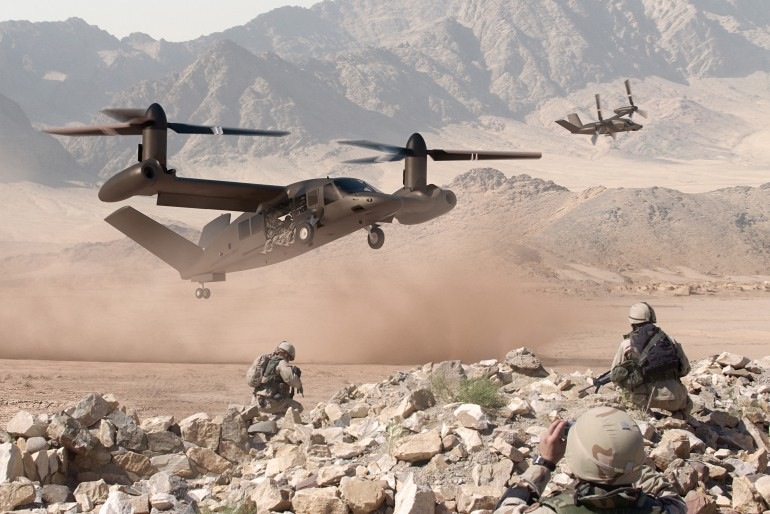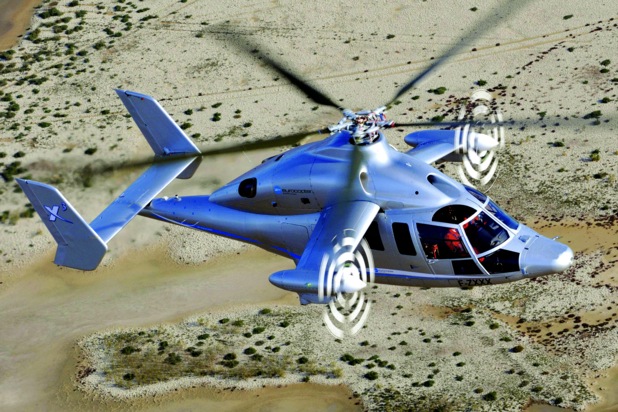
WASHINGTON: What is Future Vertical Lift? There is no one answer, but rather a range of possibilities. At one extreme is a single mega-program, building four variants for the four services to replace a host of existing helicopters, a vision in some ways even more ambitious than the long-troubled tri-service Joint Strike Fighter (JSF). At the opposite extreme, however, FVL would just be overarching guidance and common technology for a range of separate, service-specific programs, both new aircraft and upgrades to existing helicopters. The reality will almost certainly end up somewhere in between.
“We don’t know exactly where that sweet spot is,” Brig. Gen. Gary Thomas told me frankly. Thomas, a Marine Corps fighter pilot, is co-chair of the Pentagon’s executive steering group for FVL, and he’d just spoken about the initiative at the Center for Strategic and International Studies. “The starting point is the desired capabilities [and] the desire to produce commonality,” he said, but they’re staying flexible about the end point.
http://youtu.be/vfggwmhcvC0
“Eventually, this process will inform a new-build program, but we’re not there yet,” Thomas told me. Until then, he expects FVL to spin off technologies and ideas for upgrades to existing helicopter programs.
“The start of at least the first program has moved a little bit to the right, a couple of years,” said the other co-chair of the FVL steering group, Jose Gonzalez, deputy director for land warfare and munitions in the Pentagon’s acquisition, technology, and logistics (ATL) organization. “[But] one thing we need to keep in mind,” he told the audience at CSIS. “A lot of the Future Vertical Lift work — the analysis work that we’re doing and the technology work that we’re doing — could feed alternatives other than a new-start program. They could inform a major upgrade [i.e. to an existing aircraft], or there could be a CONOPS change” — that is, a change in concepts of operation not necessarily accompanied by new equipment at all.
“In the past,” Brig. Gen. Thomas told the CSIS audience, the military and industry have tended to think about vertical lift narrowly in terms of individual platforms: “It’s a helicopter,” full stop. In the FVL construct, however, the “air vehicle” and the “common mission architecture” are co-equal components. What’s more, it’s the latter — developing common, compatible, or even interchangeable mission equipment that can go into different kinds of aircraft — that may be “your greatest return on investment,” Thomas said, because it could simplify logistics and reduce operations and maintenance costs for decades to come. (This might well be a lesson learned from the JSF. Its software, computing power and sensors are the aircraft’s greatest assets.)
There are limits to commonality, noted Col. Kevin Christensen, an Army helicopter pilot who, like Thomas, works for the Joint Staff’s J-8, who handle force structure and resource assessment. “Laws of physics still apply, so the bigger [aircraft] is going to have a bigger engine and the smaller one’s going to have a smaller engine,” Christensen said. But the FVL vision is to design both engines so a single maintainer can work on both, without needing a special course on each aircraft.
Other equipment could be completely interchangeable. For example, Christensen said, “the avionics architecture ought to be plug and play, so if it’s an Army airplane’s at a Marine facility and a radio or nav[igation] system needs to be swapped out, we can do that.”
That is impossible today. When Marines landed their helicopters at his Army helicopter unit’s base in Afghanistan, “all I could give them was meals and a cot,” Christensen said. The four armed services among them have almost two dozen different helicopters, each with its own unique needs in terms of spare parts, training programs and the like. That’s fiscally inefficient and operationally cumbersome. “We haul 23 systems or so to a theater, each with its own line of supply,” he said.
Those 23 existing kinds of aircraft can be upgraded with common, interoperable equipment developed under FVL — up to a point. Eventually, an aircraft runs out of room, payload, or electrical power if you keep adding new equipment as “afterthoughts” to the original design, Christensen said. The “huge payoff,” he said, is to design commonality into new aircraft “from the very beginning.”
So FVL eventually does need to lead to a new helicopter — or whatever replaces conventional helicopters in the future.
There’s intense competition between Bell-Boeing tilt-rotor technology, as used on the V-22 Osprey and the proposed V-280 Valor, and Sikorsky’s hybrid rotor-and-propeller aircraft like the X-2, X-3, and the proposed Raider and Defiant concepts. And Airbus may well weigh in as the program’s direction becomes clearer.
“We have no idea what the actual design turns out to be,” Christensen told me after the public discussion. In fact, there will be several designs, each quite possibly run as an independent program — in contrast to the F-35 Joint Strike Fighter approach. “Unlike JSF, where we’re talking about a program to do multiple variants of an airplane, FVL may be several programs of record,” he told the CSIS audience.
“There were a lot of lessons learned in terms of that program [F-35] and mistakes made,” Brig. Gen. Thomas added.
Like F-35, however, the FVL initiative must ultimately produce new aircraft to replace current ones as they reach the end of their useful service life. “We have a finite time,” Gonzalez said, working backwards from the expected retirement dates of existing systems.
“It’s not a matter of if,” said Thomas. “It’s a matter of when.”
France, Germany ink deal on way ahead for ‘completely new’ future European tank
Defense ministers from both countries hailed progress on industrial workshare for a project that they say “will be a real technological breakthrough in ground combat systems.”




























